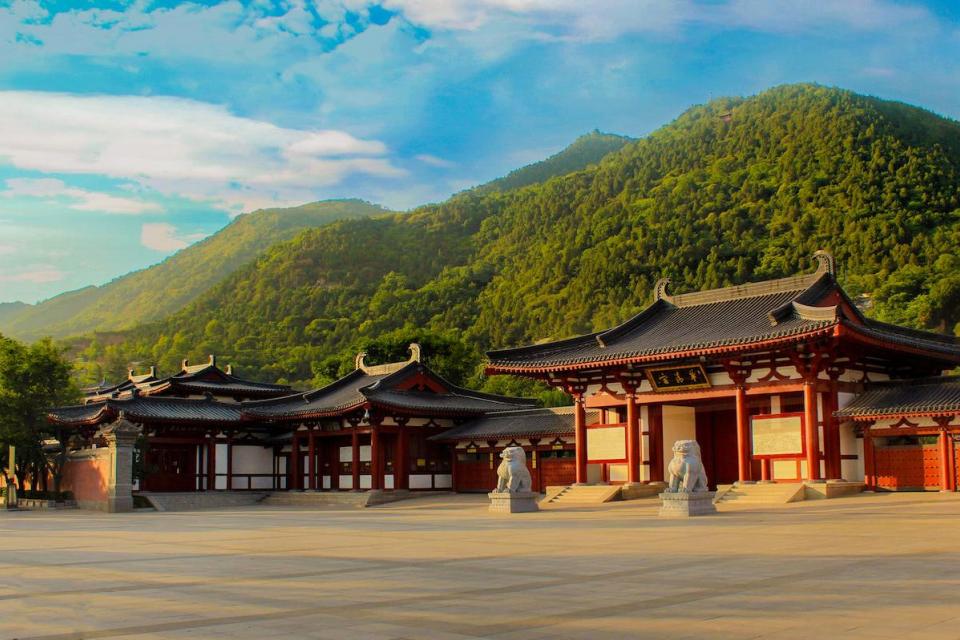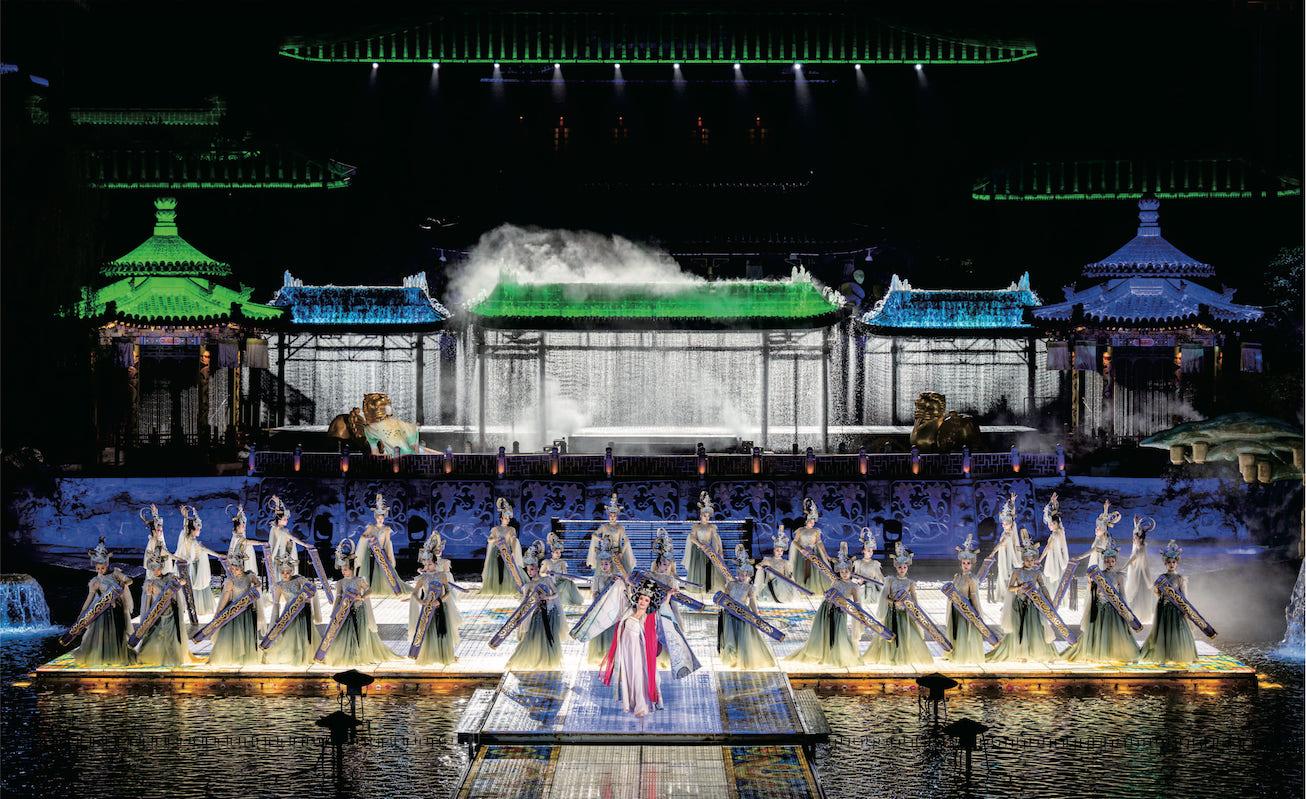Chinese Culture Talk: The Regeneration of Huaqing Palace into a Major Historical and Cultural Site
During a recent visit by a Xi’an delegation from Xi’an Municipal Administration of Culture and Tourism, Yao Xinyuan, a renowned expert currently serving as Chairman of Shaanxi Huaqing Palace Culture and Tourism Co. Ltd., presented a cultural talk about the Protection and Inheritance of Cultural Heritage in China at the China Cultural Centre in Malta. Focusing on Huaqing Palace, Yao explained how in 2007, they came up with a plan to transform this historical site with a rapid decline in tourists into an outstandingly popular and profitable attraction. This endeavour was so successful that it changed the tourism pattern in Xi’an and blazed a new development path for the Shaanxi cultural tourism industry.

Huaqing Palace
Huaqing Palace is a unique landmark in Shaanxi province. In 1982, the site was approved as one of the first batch of key scenic spots in China by the State Council. Later on in 2001, Huaqing Palace was rated as a national forest park by the National Forestry Administration, while in 2009, it was assessed as one of the main scenic spots of Qinling Zhongnanshan Geopark by UNESCO.
The site of the palace is located at the foot of the magnificent Lishan mountain. Enhanced with natural hot springs and the surrounding pristine environment that make it ideal for hunting, across the centuries, the place drew the attention of the ruling emperors who used it as a leisure spot.
The original palace is said to have been built by King You during the Western Zhou Dynasty (11th century BC to 771 BC). Several additions were made to the site by different emperors as time went by. However, some of the most momentous changes took place during the reign of Emperor Xuanzong of the Tang Dynasty (618 AD to 907 AD). In fact, huge amounts of funds were spent to develop the site into a luxurious palace, an imperial winter resort with beautiful gardens and various natural hot springs and bathing pools. It was Xuanzong who renamed the site as Huaqing Palace and over the course of his 44-year reign, he visited it over 36 times; a situation which eventually led to a full-scale rebellion! Much of the original palace was damaged during this uprising and many of the structures we see today were either rebuilt during the Qing Dynasty (1644 – 1912) or after 1949.
There are only 10 kilometres between Huaqing Palace and the famous Terracotta Soldiers. Yet while the latter was always brimming with tourists, after the reform and opening up of China, Huaqing Palace suffered a rapid decline in tourists. It was clear that the site was not meeting the demands that were created by the accelerated development of leisure tourism and the higher expectations of visiting tourists.
In 2007, this historical site, its profound history and its unique cultural landscape were thoroughly studied and explored by Shaanxi Huaqing Palace Culture and Tourism Co. Ltd. in order to come up with a new plan which could invigorate the site’s touristic appeal. Eventually, it was decided to join these strengths together while adding also something original – the first large-scale historical live dance drama in China.

A Performance of The Song of Everlasting Sorrow
The 60-minute drama evolved from the real-life legendary romance which took place at Huaqing Palace between Emperor Xuanzong and his concubine Yang Guifei who was originally his son’s wife. Acclaimed for her exquisite beauty, the emperor became obsessed with this woman and he gave her whatever she asked of him. He enjoyed spending time with her at this palace and became so infatuated with her that he started to ignore his imperial duties. This situation opened the way to a revolt which led the emperor to be overthrown and forced to consent to have Lady Yang killed. He never recovered after her death.
This love story known as the ‘Romeo and Juliet’ of China was immortalised by the Chinese poet Bai Juyi in his narrative poem ‘Song of Everlasting Sorrow’. Naming the show like this famed poem, 300 professional actors were drawn in to give life to history. The latest technology was integrated with the natural charm of the site to come up with an extraordinary stage that placed the performance right where the story happened. Situated against the backdrop of Lishan Mountain, the underwater stage was built on Jiulong Lake of Huaqing Pool surrounded by pavilions, corridors, palaces and weeping willows. The stage was set close to the audience to give them the opportunity to integrate with the actors and to feel part of the narrative. Light effect equipment, the largest LED soft screen in Asia, together with retractable seats hidden underground, added the wow factor to the performance.
In the meantime, to revive the unique culture of the scenic area and the Tang culture, nine themed cultural tourist areas were created in the surrounding grounds, including the Tang Palace Garden, Imperial Hot Spring Garden, Traditional Chinese Opera Garden, Remonstration Garden, Forbidden Garden, Taoism Garden, Buddhism Garden, Celestial Garden, and Imperial Guard Garden.
Following this upgrade of the site, the revenue of Huaqing Palace rocketed from less than 80 million yuan (around €10,145,000) in 2008 to over 760 million yuan (around €96,399,000) in 2019. This remarkable achievement led to the development of local hotels, transportation, catering services and other tertiary industries with over 650 million yuan (around €82,454,000) contribution to local finance.
After the impact of the Covid-19 pandemic, the site of Huaqing Palace continued to ride the wave, once again by regenerating itself with a new ice-fire version that attracted tourists to the site even in the winter season. This innovation broke the industry pattern and the seasonable limitations, contributing to the extension and sustainable development of the performance industry chain. Indeed, within less than a three-month period in 2022, over 130 performances were shown to an audience of over 300,000, generating a revenue of nearly 70 million yuan ( around €82,454,000).
Such results were achieved through the interplay between the tourism economy, cultural creativity, historical inheritance, and innovative development. This led to a breakthrough in the Shaanxi cultural tourism market, altering the tourism pattern in Xi’an that had existed for decades.
Yao Xinyuan concluded that it is necessary for Xi’an as well as for other famous historical and cultural cities in China and abroad to think about how to revive the silent and great history to meet the high-level needs of tourists today.

